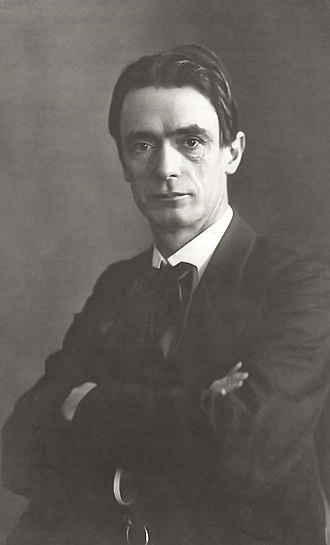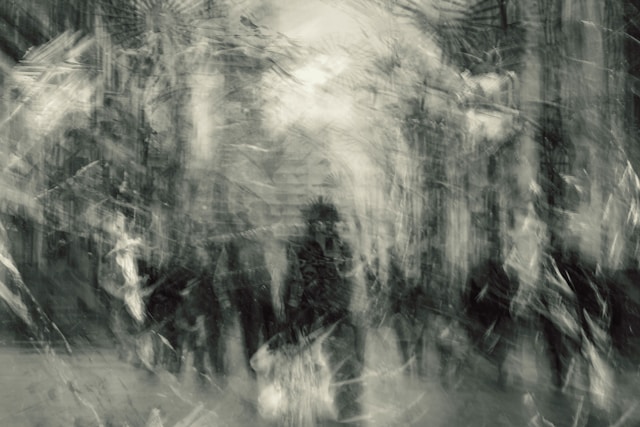Rudolf Steiner’s profound spiritual philosophy, known as Anthroposophy, offers a unique perspective on human consciousness, spiritual development, and the nature of reality itself. This comprehensive exploration delves into the core aspects of his teachings, examining how they continue to influence spiritual seekers and practical initiatives worldwide.
The Life of Rudolf Steiner: A Journey of Spiritual Discovery
Born in 1861 in what was then Austria-Hungary (now Croatia), Rudolf Steiner emerged as one of the most significant spiritual thinkers of the modern era. From his earliest years, Steiner demonstrated an unusual capacity for spiritual perception, regularly experiencing the supersensible world alongside the physical one. As he would later write in his autobiography: “The spiritual world was to me as much a reality as the physical world is to the average person.”
His formal education led him through scientific and philosophical studies, culminating in his doctorate in philosophy. This combination of spiritual insight and rigorous intellectual training would become a hallmark of his later work. During his early career, Steiner served as an editor of Goethe’s scientific writings, a position that deeply influenced his understanding of how spiritual and scientific worldviews could be reconciled.
In 1902, Steiner began his public work as a spiritual teacher, initially within the Theosophical Society. However, fundamental differences in perspective led him to establish Anthroposophy as an independent spiritual movement in 1912. As he explained, “Anthroposophy is a path of knowledge that seeks to lead the spiritual in the human being to the spiritual in the universe.”

The Nature of Reality in Anthroposophical Teaching
Steiner presented a sophisticated understanding of reality that encompasses both physical and spiritual dimensions. In his worldview, the universe is fundamentally spiritual in nature, with the physical world representing just one level of a much vaster reality. As he expressed in his fundamental work “Knowledge of Higher Worlds”:
The physical world is not the only reality. It is merely the visible manifestation of a spiritual reality that lies behind it. Just as ice is frozen water, so is the physical world crystallized spirit.
According to Steiner, reality consists of multiple interpenetrating worlds or planes of existence:
The Physical World: The material realm we experience through our physical senses.
The Etheric World: A realm of life forces that shape and maintain living organisms.
The Astral World: The realm of soul and feeling, where emotions and desires exist.
The Spiritual World: The highest realm, where spiritual beings and archetypal ideas reside.
These different levels of reality are not separate but exist in constant interplay, with higher realms continuously influencing and shaping lower ones. As Steiner noted: “Everything physical is ultimately an expression of the spiritual working into space and time.”
The Human Being as a Microcosm
In Steiner’s philosophy, the human being represents a remarkable microcosm of the entire universe. He described humans as having a fourfold nature:
The Physical Body: Our material form, subject to the laws of physics and chemistry.
The Etheric Body: The life force that maintains our biological processes and forms.
The Astral Body: Our emotional and feeling nature, the seat of consciousness.
The “I” or Ego: The spiritual core of our being, our individual spiritual identity.
As Steiner eloquently stated: “The human being is not a citizen of one world only, but of three worlds. With his physical body he lives in the physical world, with his soul in the soul world, and with his spirit in the spirit world.”
This complex understanding of human nature forms the basis for much of Anthroposophical practice, from education to medicine. Each aspect of the human being requires different forms of nourishment and development, leading to Steiner’s various practical initiatives.
The Path of Spiritual Development
Central to Steiner’s teaching is the possibility of conscious spiritual development. He outlined specific practices and exercises designed to awaken higher forms of perception and understanding. As he wrote in “How to Know Higher Worlds”:
Every human being carries within themselves the capacity for knowing all worlds. Everything that is necessary for the cognition of the highest truths lies dormant in the human soul.
The path of development he described involves several key elements:
Inner Development: Through specific meditation and concentration exercises, individuals can develop their capacity for spiritual perception.
Moral Development: The cultivation of specific virtues and ethical qualities is essential for spiritual progress.
Understanding of Cosmic Evolution: Knowledge of humanity’s spiritual history and destiny provides context for individual development.
Steiner emphasized that this path requires both rigorous thinking and refined feeling: “Clear thinking is as necessary for spiritual development as devotional feeling. The one without the other leads to error.”

The Purpose of Human Evolution
In Steiner’s vision, human evolution has a profound spiritual purpose. He saw humanity as participating in a vast cosmic evolution, gradually developing higher forms of consciousness and spiritual freedom. As he expressed:
The purpose of human evolution is to achieve freedom through the development of consciousness. This freedom is not given to us as a gift; we must achieve it through our own efforts.
This evolution proceeds through various stages, each marked by different forms of consciousness and relationship to the spiritual world. The current stage, according to Steiner, is characterized by the development of intellectual consciousness and individual freedom, but this is not the final stage.
Future evolution will lead to new forms of spiritual perception and consciousness, but these must be achieved through conscious effort and development. As he noted: “The human being is not finished; we are still in a process of becoming.”
Practical Applications of Anthroposophy
Steiner’s spiritual insights led to numerous practical initiatives that continue to influence various fields today:
Waldorf Education: Based on a deep understanding of child development and the need to nurture both spiritual and practical capacities.
Biodynamic Agriculture: An approach to farming that recognizes the spiritual forces in nature and works to enhance them.
Anthroposophical Medicine: A holistic approach to healing that addresses all aspects of the human being.
Social Reform: Ideas for the healthy organization of society based on spiritual insights.
As Steiner stated: “Spiritual science is not meant to be merely theoretical but to bear fruit in practical life.”
The Contemporary Relevance of Steiner’s Work
Today, Steiner’s insights continue to offer valuable perspectives on contemporary challenges. His emphasis on the integration of spiritual and material knowledge, the importance of individual development, and the need for holistic approaches to education, agriculture, and medicine speaks directly to many modern concerns.
His vision of human potential and spiritual development offers a path forward for those seeking deeper meaning and purpose in life. As he wrote: “Our highest endeavor must be to develop free human beings who are able of themselves to impart purpose and direction to their lives.”
Conclusion
Rudolf Steiner’s spiritual philosophy offers a comprehensive vision of human nature and cosmic evolution that continues to inspire and guide spiritual seekers today. His integration of spiritual insight with practical application provides a unique approach to human development and social renewal.
While some aspects of his teachings may challenge contemporary worldviews, the depth and breadth of his insights offer valuable perspectives on perennial questions about the nature of reality, human purpose, and spiritual development. As humanity faces increasing challenges in the 21st century, Steiner’s emphasis on the integration of spiritual wisdom with practical action remains particularly relevant.
As he himself noted in one of his final lectures: “The most important thing is not to establish rules but to create understanding for living spiritual realities.” This understanding, and the practical wisdom that flows from it, remains his enduring legacy to the world.

